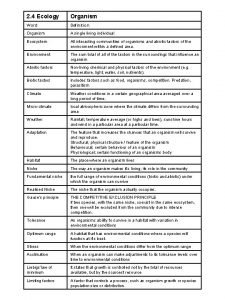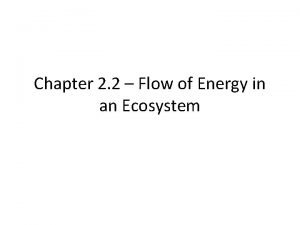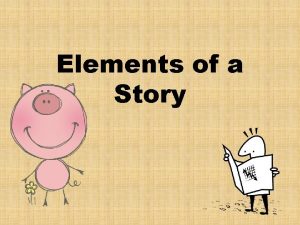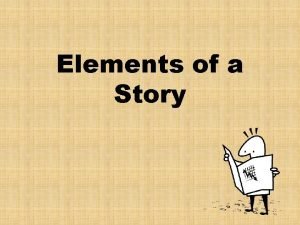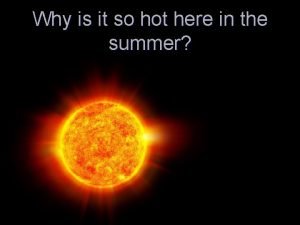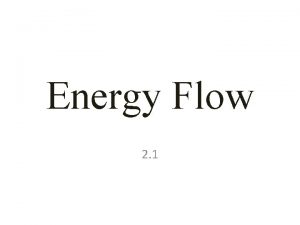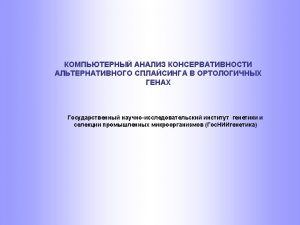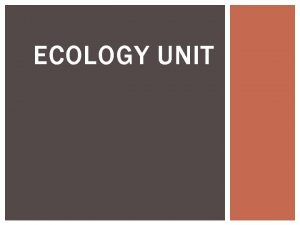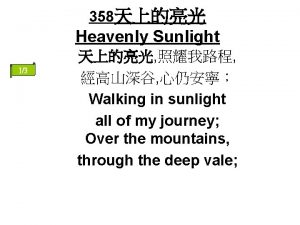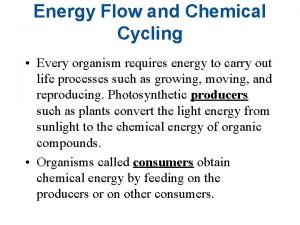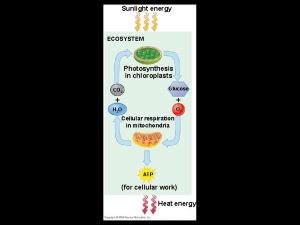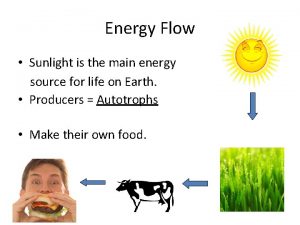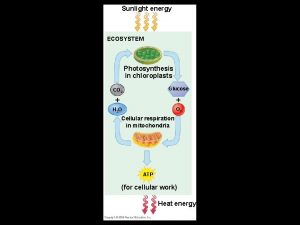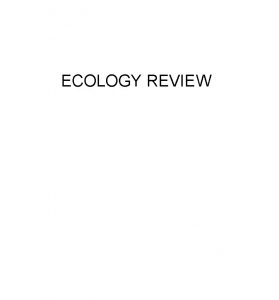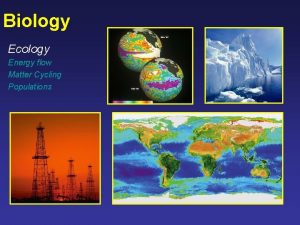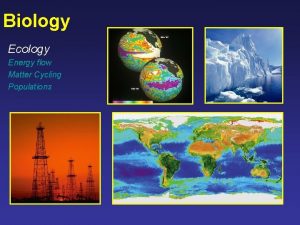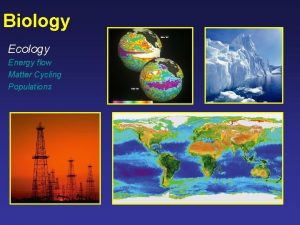Ecology Energy Flow Every organism needs energy Sunlight






















- Slides: 22

Ecology: Energy Flow • Every organism needs energy. • Sunlight is the main energy source for life. • Less than 1% of sunlight is used by organisms. • Where does the rest of the sunlight go? Photograph courtesy philip. greenspun. com

Ecology: Energy Flow • photosynthesis: use of light energy to produce carbohydrates • autotrophs make their own food. • autotrophs are producers • Why?

Ecology: Energy Flow • sunlight is not available to all organisms • chemosynthesis: use of chemical energy to produce carbohydrates • most chemotrophs are bacteria and algae Deep sea hydrothermal vent worms • are they autotrophs?

Ecology: Energy Flow • • • autotroph: produces its own food heterotroph: acquires energy by eating other organisms What is a producer? What is a consumer? Are heterotrophs producers or consumers? consumers: primary secondary tertiary quaternary

Ecology: Energy Flow • • heterotrophs are consumers herbivores eat plants carnivores eat meat omnivores eat plants and meat insectivores eat _______ detritivores feed on remains decomposers break down organic matter Where are decomposers in a food chain?

Ecology: Feeding Relationships • Energy flows through an ecosystem in one direction (arrows) from the sun or inorganic compounds to producers to consumers. • Food chain: diagram that shows simple feeding relationships. • Trophic level: each step in a food chain • All food chains start with a producer.

Feeding Relationships: Food Chain squid (tertiary consumer) small fish (secondary consumer) zooplankton (primary consumer) algae (producer)

Students be careful! Remember: the arrow shows the direction energy flows in an ecosystem. In this example, the Leopard seal eats the penguin and as a result, gets the energy.

Ecology: Feeding Relationships • A food web is a network of complex feeding relationships that connects multiple food chains. • If one species is lost from a food web, all other species are affected.

Terrestrial Food Web

Aquatic Food Web

My Favorite Food Web Matt Pendley, Buford High School, Buford, GA

Ecology: Community Interactions Competition: when organisms try to use a resource in short supply at the same time and same place.

Ecology: Community Interaction Predation: when one organism captures and eats another organism.

Ecology: Community Interaction Symbiosis: any relationship in which two species live closely together.

Ecology: Symbiosis Mutualism: when both species benefit from the interaction. In this example, the sea anemone is cleaned by the clown fish, who in turn is protected by the anemone’s stinging tentacles.

Ecology: Symbiosis Commensalism: when one species benefits from the interaction and the host species is unaffected. The leafy plant is an epiphyte, growing on another plant only for support.

Ecology: Symbiosis Parasitism: interaction in which one organism benefits and the other organism (host) is harmed. Asian tiger mosquito Does the host die as a result?

Ecological Pyramids: Energy Pyramid (energy flow in a community) • each trophic level represents a different group of organisms in a food chain • about 10% of the energy available at each trophic level is transferred to organisms at the next trophic level • energy is lost as heat and in life processes

Ecological Pyramids: Biomass Pyramid • biomass is the total amount of living tissue • expressed as grams of organic matter per unit area • biomass pyramid represents the potential amount of food available at each trophic level • normally the greatest biomass is at the base

Ecological Pyramids: Numbers Pyramid • based on the numbers of individuals at each trophic level • some number pyramids look like biomass & energy pyramids, some do not • in this example, the oak tree has a large amount of energy and biomass, but it is only one organism

Laws of Ecology All things are interconnected. Everything goes somewhere. There’s no such thing as a free lunch. Nature bats last. Ecology: A Pocket Guide by Ernest Callenbach
 Why does organism eat another organism
Why does organism eat another organism Definition of organism in ecology
Definition of organism in ecology Principles of ecology chapter 2
Principles of ecology chapter 2 Chapter 2 section 1 organisms and their relationships
Chapter 2 section 1 organisms and their relationships Principles of ecology 2 flow of energy in an ecosystem
Principles of ecology 2 flow of energy in an ecosystem Every nation and every country
Every nation and every country Empower every person and organization
Empower every person and organization Every knee shall bow every tongue confess
Every knee shall bow every tongue confess Every rotarian every year
Every rotarian every year Every nation and every country
Every nation and every country Every picture has a story and every story has a moment
Every picture has a story and every story has a moment Every child every day
Every child every day Every story needs
Every story needs Exposition character
Exposition character Primary needs and secondary needs
Primary needs and secondary needs Satisfaction
Satisfaction Simple claustral complex
Simple claustral complex Strategic gender needs and practical gender needs
Strategic gender needs and practical gender needs What is a learning need
What is a learning need Flow of energy vs flow of matter
Flow of energy vs flow of matter Oikos meaning
Oikos meaning Indirect vs direct sunlight
Indirect vs direct sunlight Solar system
Solar system

